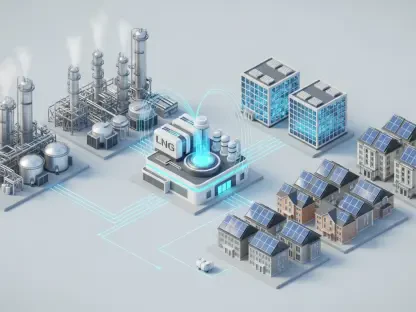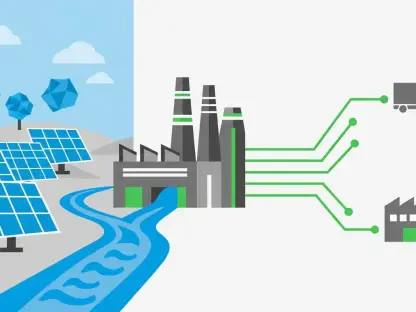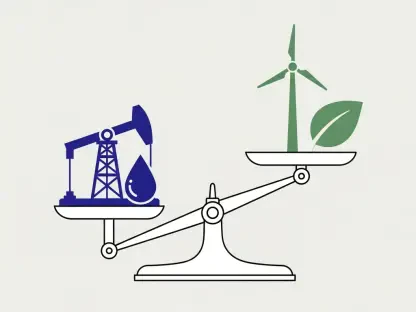As energy bills continue to climb across the UK, households and businesses are grappling with the financial strain of supporting a transition to a cleaner, more sustainable energy future, while facing challenges not just in the raw cost of energy, but also in the hidden expenses—known as non-commodity costs—tied to infrastructure upgrades and outdated policies that no longer align with today’s needs. These mounting pressures threaten to overshadow the long-term benefits of renewable energy, especially as the nation aims for net-zero emissions by 2030. Yet, amidst this complex landscape, actionable solutions are emerging, from empowering consumers with innovative technologies to rethinking how the costs of large-scale projects are funded. By exploring both immediate fixes and systemic reforms, a balanced approach can ensure affordability without derailing environmental goals. This discussion delves into practical strategies and collaborative efforts that could pave the way for a fairer, greener energy system.
Empowering Consumers to Cut Costs
The rising cost of energy has prompted a shift toward consumer-led solutions that can directly impact household bills. One effective strategy involves leveraging modern technologies such as solar panels, home batteries, heat pumps, and electric vehicles, paired with time-of-use tariffs. These tools allow users to shift their energy consumption to off-peak hours when rates are lower, resulting in noticeable savings. Energy providers are increasingly supporting this trend by offering programs that make such technologies more accessible, even to those with limited upfront funds. This approach not only reduces individual expenses but also eases strain on the national grid by distributing demand more evenly. The potential for widespread adoption of these practices highlights a growing recognition that small, personal adjustments can contribute significantly to broader affordability goals, creating a win-win for both consumers and the energy system at large.
Beyond individual efforts, targeted initiatives are proving vital in supporting vulnerable communities and low-income households facing the brunt of rising bills. Pilot projects across the UK have demonstrated success by providing free batteries and low-carbon equipment, yielding bill reductions of up to 15% for participants. Community energy-sharing models are also gaining traction, enabling neighborhoods to benefit from locally generated renewable power. These efforts underscore the importance of tailored interventions that address specific financial barriers while fostering a sense of collective progress. By focusing on those most at risk of energy poverty, such programs ensure that the transition to a sustainable future does not disproportionately burden the least equipped to handle it. This blend of innovation and equity offers a blueprint for scaling similar solutions nationwide, reinforcing the idea that affordability and sustainability can coexist through thoughtful, localized action.
Tackling Hidden Drivers of Bill Increases
A significant portion of the UK’s rising energy bills stems from legacy policies that, while once instrumental in promoting renewable energy, now represent an outdated burden on consumers. Schemes like the Renewables Obligation and Feed-in Tariff were critical in jumpstarting green initiatives, but their costs continue to inflate household expenses despite advancements that have made renewables more competitive. A proposed solution is to shift these expenses away from consumer bills and into government budgets, providing immediate financial relief. Additionally, mechanisms like the Carbon Price Floor, rendered obsolete with the phasing out of coal, could be abolished to further reduce unnecessary charges. Addressing these policy relics offers a direct path to easing the financial load on households, ensuring that past successes in energy innovation do not become today’s obstacles to affordability.
Another critical area driving up costs is the massive investment required for clean energy infrastructure to meet ambitious 2030 targets. To mitigate the immediate impact on consumers, a novel financing model has been suggested, where a dedicated body—whether public or private—covers upfront expenses. Under this framework, repayments would be deferred until the benefits of cheaper, renewable energy are realized, then spread over decades at affordable rates. This approach prevents households from bearing the brunt of costs before seeing tangible savings, aligning financial burdens with long-term gains. By rethinking how infrastructure projects are funded, this strategy could smooth the transition to a sustainable energy system, ensuring that the push for net-zero does not come at the expense of today’s affordability. It represents a forward-thinking balance between ambitious goals and practical consumer protection.
Forging a Path Through Collaboration
Achieving affordable energy bills in the UK demands a united effort among energy providers, regulators like Ofgem, and government bodies. No single entity can address the multifaceted challenges of the energy transition alone, making partnerships essential for distributing responsibilities and resources effectively. By aligning on policy reforms, such as removing outdated costs from consumer bills, and supporting consumer-focused innovations like time-of-use tariffs, stakeholders can create a cohesive strategy that prioritizes affordability. This collaborative spirit also extends to ensuring that regulatory frameworks keep pace with technological advancements, fostering an environment where new solutions can thrive. Such teamwork is crucial to safeguarding households from disproportionate burdens while maintaining momentum toward a greener energy landscape, proving that shared goals can drive meaningful progress.
Looking beyond immediate relief, the journey to net-zero emissions requires a delicate balance between short-term affordability and long-term sustainability. While consumer empowerment and policy adjustments offer quick wins, systemic changes like innovative financing models are equally vital to spread costs fairly over time. The integration of cutting-edge technology with updated regulations must be prioritized to maximize efficiency and minimize financial strain on households. This dual focus ensures that the benefits of renewable energy—lower operational costs and environmental gains—are accessible to all, not just in the distant future but through incremental steps taken now. By blending today’s practical solutions with tomorrow’s strategic planning, the UK can build an energy system that serves both economic and ecological imperatives, setting a global example for how to navigate this critical transition.









